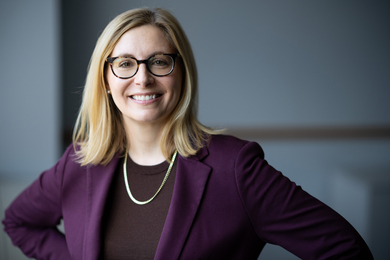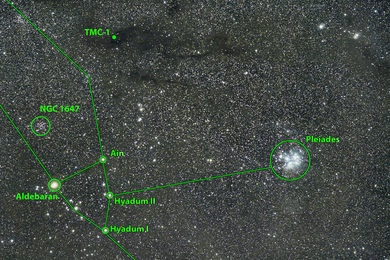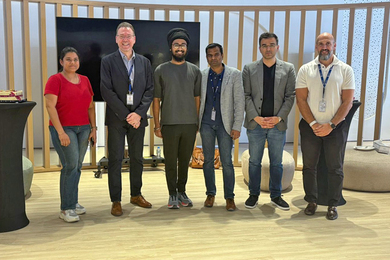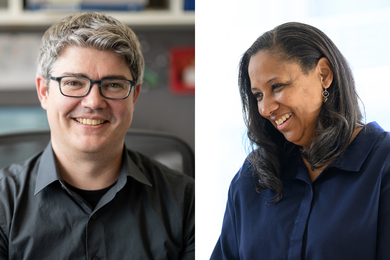Samuel A. Goldblith, a survivor of the Bataan Death March who became a professor of food science and technology and an advocate of business and educational cooperation between the United States and Japan, died at Kindred Hospital in Peabody on Dec. 28. The Melrose resident was 82.
Paul E. Gray, professor of electrical engineering and former MIT president, said, "His love of life and family, his passion for service, his convictions about the healing power of love and his boundless energy were an inspiration for me. MIT is a better place because of Sam Goldblith."
Steven R. Tannenbaum, the Underwood-Prescott Professor of Toxicology and co-director of the Division of Bioengineering and Environmental Health, was Goldblith's student, colleague and friend.
"He led a remarkable life; he was a remarkable man," Tannenbaum said. "During the war, he saved his own life and the lives of his men by squeezing the juice out of grass to get vitamins. Back at MIT, he became a pioneer of bioengineering. As an administrator, Goldblith was hugely successful in bringing together business interests and academic interests, in raising money for MIT, and in establishing the MIT Japan office."
But the sum of the man went far beyond his astonishing range of achievements, Tannenbaum added. "Goldblith was a unique, generous, charismatic person, and a man of endless energy. We had to run to keep up with him. He had a loud voice, a booming laugh, a huge store of jokes--mostly unrepeatable limericks--and a nickname for everyone," he said. "He even had a regular table at Locke-Ober restaurant in Boston. And if you ate with him, you knew--you didn't even try to pay. He wouldn't allow it."
A LIFE INTERRUPTED
Born in Lawrence, Mass., on May 5, 1919, Goldblith received the S.B. from MIT in 1940. It was a dream come true for his Russian immigrant father, Goldblith wrote in his autobiography, "Appetite for Life" (1996).
Goldblith would cling to that dream, to the strength of his family's religious life and to his new marriage to Diana Greenberg throughout the harrowing half-decade to come.
In 1942, as a second lieutenant in the US Army Corps of Engineers, he became a prisoner of war. Beginning with the grisly 60-mile death march across the Bataan Peninsula in the Philippines, he spent more than three years in prison camps there and on the "hell ships" used to transport prisoners to camps in Japan.
Though he too almost starved, Goldblith, ever the scientist, studied the effects of malnutrition-related diseases including beri-beri and hypoproteinemia on those around him. His calculations on food and sanitation in POW camps were published in the Office of Naval Research Reports in 1947.
In one POW camp, he set up a method for calculating vitamin A deficiency by "measuring the ability of volunteers to see a fixed-intensity light source through successively thicker sheets of Japanese toilet tissue. Not a sophisticated test," he noted wryly. "But at least it got published in Science."
Goldblith was awarded two Bronze Stars and a Silver Star. In his autobiography, Goldblith credits his good luck, belief in God and others' kindness with keeping him alive.
Kenneth A. Smith, professor of chemical engineering and former vice president for research at MIT, recalled that Goldblith did more than remember other people's kindness; he repaid it loyally, remaining in lifelong contact with those who had helped him survive the war.
STUDENT, TEACHER, MENTOR
After the war, Goldblith resumed his studies at MIT in food technology, receiving the S.M. in 1947 and the Ph.D. in 1949. He was a professor of food science and technology from 1959-74.
He was a leader in research into domestic uses of microwave ovens and in freeze-drying, which was essential to the US space program. He was author or co-author of more than 250 articles in scientific journals and the editor or co-editor of six books in the field of food science and technology.
Goldblith's numerous awards and honors included the Distinguished Food Scientist Award, and he served on several committees of the National Academy of Science's National Research Council.
But it was Goldblith's experience of the unique relationship between teacher and student that forever changed his own life and life at MIT. His relationship with Yaichi Ayukawa of Japan, his first graduate student, released the Bataan survivor turned professor from the past.
Goldblith and Ayukawa became lifelong friends. Together, they worked to open the MIT Japan Office in 1976 and later collaborated in business.
On his attitude toward Japan, Goldblith wrote, "It's not so much a matter of forgiveness. It's whether you look to the past or you look to the future. The difference is, if you look to the past, it's hate, and that brings on war. If you look to the future, it's love, and that brings on peace."
AMBASSADOR FOR US, MIT
"Sam's loyalty to MIT was boundless," Gray said, noting Goldblith's role as director in revitalizing and expanding the Industrial Liaison Program. As vice president for resource development under Gray (1978-86), "he was instrumental in planning the 'Campaign for the Future' and in strengthening the fund-raising capacity of the Institute."
In 1984, to recognize his contribution to the advancement of food science and promotion of friendly relations between America and Japan, Goldblith received the Second Class of the Order of the Sacred Treasure from the Emperor of Japan. He is only the second non-Japanese person to receive the honor.
The Samuel A. Goldblith Career Development Chair was established in 1993 and partially funded by Ayukawa's family. The first holder of the chair was Professor Peter Dedon; it is currently held by James L. Sherley, assistant professor in the Division of Bioengineering and Environmental Health.
In summarizing his life, Goldblith wrote, "I loved my wife, my family, my country, my religion and my school (MIT), which I tried to serve faithfully. I served my country in war and peace by building bridges of understanding with Japan. I was a scientist who understood business. I was lucky to become a vice president of MIT. I hope that I did not disgrace my family in the job!"
In his eulogy, Rabbi Thomas M. Alpert of Temple Tifereth Israel in Malden said, "There is a name in Hebrew for a person who has no time for hate. He is called a tzaddik, a righteous one. That was Sam Goldblith."
Goldblith is survived by a daughter and son-in-law, Judith and Richard Clark of Melrose; a son, Jonathan of Frederick, Md., and two granddaughters, Sarah Clark and Rachel Happel. His wife, the former Diana Greenberg, died in 1990. He was also the father of the late Errol D. Goldblith.
A version of this article appeared in MIT Tech Talk on January 9, 2002.






